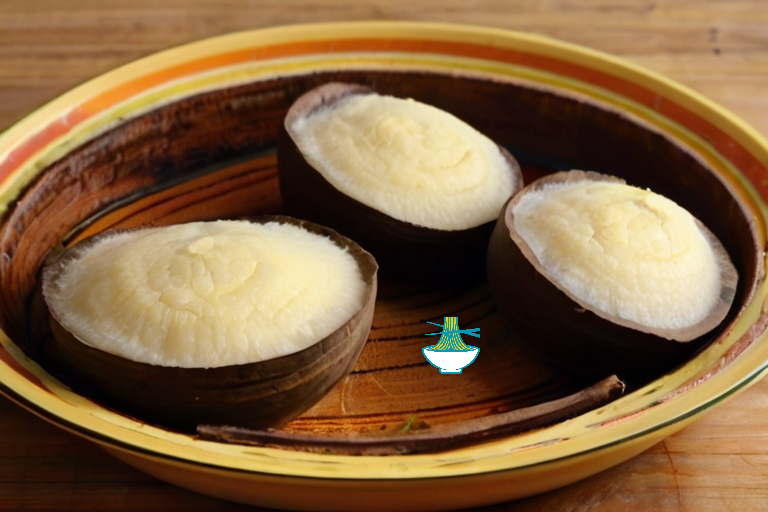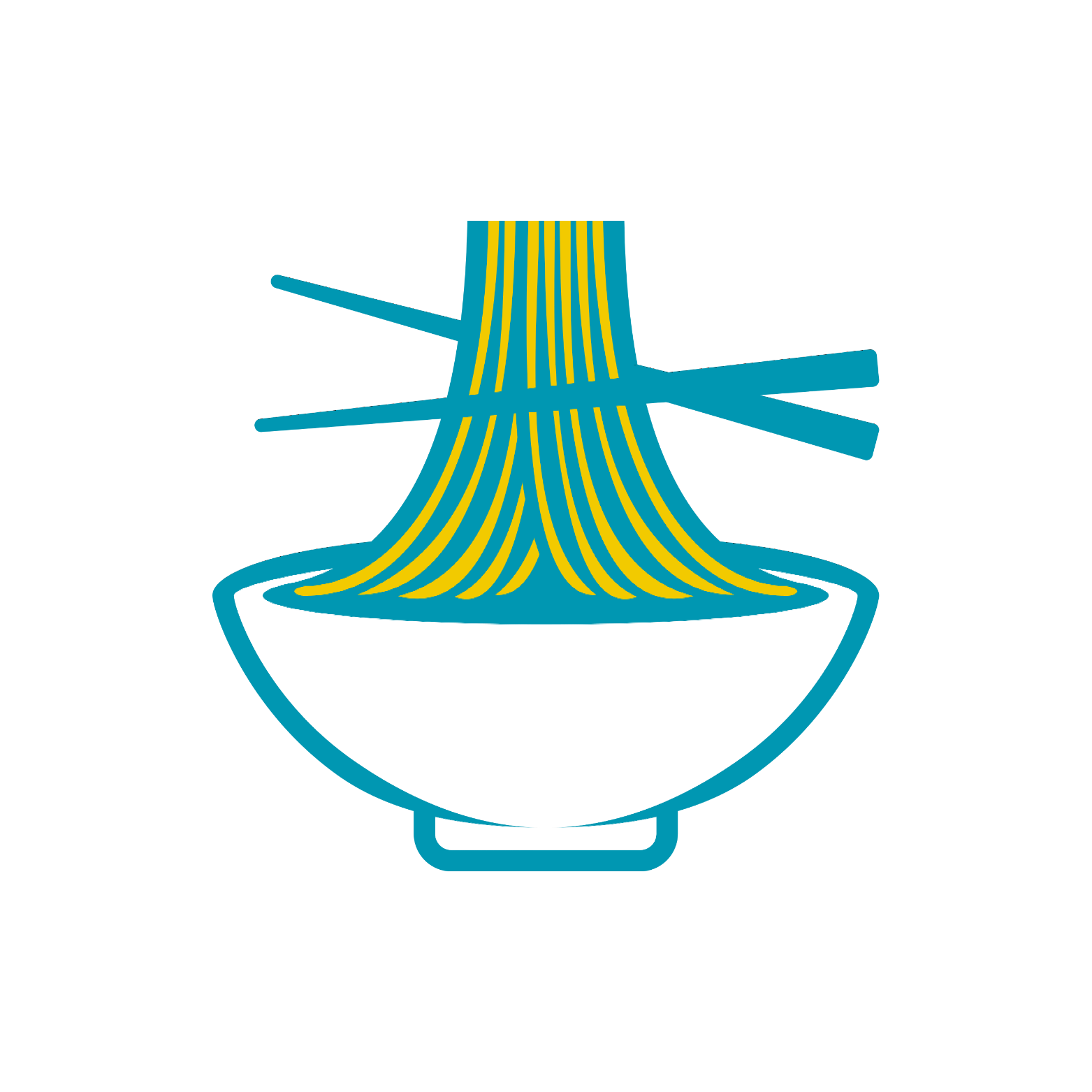Fufu is also a widely enjoyed traditional daily staple in West and Central Africa. It transforms starchy vegetables such as cassava, plantains, or yams into soft, flexible dough. Fufu finds its origins in countries such as the Central African Republic, Nigeria, Ghana, and Cameroon, where it has been a daily lifestyle and part of culture for centuries.
Fufu is made quite easily by boiling and pounding cassava and ripe plantains, and kneading them with water to get a soft, elastic texture, served with a great assortment of thick soups and stews.
Cassava, also manioc and yuca, is an Amazonian Basin root crop that was domesticated over 7,000 years ago. It became globally significant after Portuguese traders introduced it to Africa in the 16th century, where it rapidly adapted to tropical conditions and poor soils. Cassava is today a lifeline crop that supports over 800 million individuals and is at the center of African cuisine and culture, especially as the principal component of fufu.
In the majority of West and Central African countries—Ghana, Nigeria, Cameroon, and the Central African Republic, for example—cassava is boiled, pounded, and kneaded into a flexible, smooth dough called fufu. Eaten by hand and dipped into flavorful soups like groundnut stew, egusi, or okra soup, fufu is a social occasion. It is served at weddings, funerals, naming ceremonies, festivals, and everyday meals, and it signifies unity, generosity, and tradition.
Cassava's popularity owes to its versatility, resilience, and nutrition. Cassava is gluten-free naturally, with ample complex carbohydrates for energy and fiber for digestion. It also offers modest amounts of vitamin C, potassium, and magnesium. Cassava must be properly processed—boiled, fermented, or dried—to remove naturally occurring cyanogenic compounds and render it safe.
More than a crop, cassava is a cultural anchor. As fufu, it transforms meals into communal rituals, binding families and communities together for generations.

Note:
However, cassava has to be cooked since raw cassava contains toxins that are poisonous when consumed. In moderation, fufu is a warm, healthy, and seriously cultural meal that brings you close to the rich traditions of Central Africa.
🥄 Ingredients🍽️ Central African Fufu (Cassava & Plantain)
1. Fresh Cassava Root – 2 or 3 medium roots (4 cups peeled and chopped)
▪️ Peel, wash, and remove the woody core before cooking.
2. Ripe Plantains – 2 large (yellow with black spots)
▪️ Peel and chop into pieces; use fully ripe for richer texture and soft sweetness.
3. Water – 6 to 8 cups (as needed for boiling and pounding)
💧 Cook with safe water to control fufu texture.
4. Salt (Optional) – 1/4 teaspoon
🧂 Omitted traditionally; add only if wanted to taste.
✨ With just cassava, plantains, and water, no additives or flour needed in this recipe to yield a smooth, stretchy, and altogether authentic Central African fufu to go well with stews and sauces.

🍽️👩🏽🍳 Central African Fufu (Cassava and Plantain) Preparation Process
🥔 Step 1: Prepare the Cassava
- Peel the cassava roots using a sharp knife. Remove the ends, make a little incision along the length, and peel off the thick brown outer skin and the pinkish layer beneath it.
- Slice the peeled cassava into pieces (about 2–3 inches long).
- Remove the woody core from the center of each piece, if it's exposed.
- Rinse them thoroughly in cold running water to remove excess starch and dirt.
⚠️ Tip: Always use fresh cassava. If it has a waxy coating, which is common in supermarkets, be sure to remove it completely. Never consume cassava raw; it must be cooked to eliminate natural toxins.
🍌 Step 2: Prepare the Plantains
- Peel ripe plantains by cutting off the ends, cutting along the ridges, and peeling the skin.
- Cut the plantains into pieces that are similar in size to cassava pieces to ensure even cooking.
- Rinse quickly under cold water.
💡 Note: Ripe plantains are soft and slightly sweet. They offset the neutral taste of cassava and provide body to the final fufu texture.
🔥 Step 3: Boil the Ingredients
- Boil a big pot of water enough to cover all the cassava and plantain pieces (about 6–8 cups).
- Boil the water at medium-high heat.
- Add the pieces of cassava to the pot and boil them for 10 minutes.
- Add the plantain chunks to the same pot and boil for another 15–20 minutes, or until both are tender and fork-piercable.
🍴 Tip: Test doneness by putting a fork into the cassava and plantain. When it slides in easily and starts to break up, they are ready to pound.
🥣 Step 4: Pound or Mash the Fufu
Traditional Method (Recommended):
- Drain the cooked cassava and plantains, and transfer them at once, while hot, to a large wooden mortar (mortier).
- Begin pounding with a pestle (pilon) in strong, rhythmic strokes. Pound until the mixture is smooth, stretchy, and elastic.
- Intermit to turn the mixture with a wooden spatula or by hand (moistened) to ensure even texture.
- Add small dashes of warm water if needed to make the texture softer while pounding.
Modern Alternative:
If a mortar and pestle are not available:
- Use a stand mixer and paddle attachment, or a wooden spoon and heavyweight mixing bowl.
- Beat or mash the warm ingredients until smooth and stretchy. This is going to be a strenuous task, but it can yield a relatively close texture.
🧾 Note: The key to proper fufu texture is elasticity—not grainy, not crumbly, and not wet. Work while ingredients are still warm, since they stiffen to mash when cooled.
🍽️ Step 5: Shape and Serve
- In numerous households throughout Central Africa, a communal tradition is respected and upheld.
- Transfer to a serving dish or cover with plastic wrap to keep warm until served.
🥘 Serving Suggestions
- Fufu is usually served with rich soups and sauces, such as:
- Groundnut (peanut) stew
- Spinach or okra sauce
- Goat meat stew
- Grilled fish or chicken
- To eat: Take a piece of fufu and roll it into a ball using your fingers, then dip it into the sauce or soup.
🙌🏽 Cultural Note: Fufu is eaten with the fingers, most often the right hand. In many households in Central Africa, it is a communal tradition that is upheld with respect.
🧰 Tools Used in Making Central African Fufu (Cassava & Plantain)
Note:
Some links below are Amazon affiliate links. As an Amazon Associate, we may earn a small commission at no extra cost to you. These recommendations remain unbiased and focused on quality and value.
1. Sharp Paring Knife or Vegetable Peeler
Purpose: To peel the thick skin of cassava and plantains safely and efficiently.
Recommended Brands:
2. Large Cutting Board
Purpose: Provides a clean and stable surface to cut cassava and plantains into uniform chunks.
Recommended Brands:
3. Large Cooking Pot (6–8 Qt)
Purpose: To boil cassava and plantains until tender. Must be deep enough for proper water coverage.
Recommended Brands:
4. Fine Mesh Strainer or Colander
Purpose: To drain boiled ingredients quickly while preserving heat for pounding or mashing.
Recommended Brands:
5. Silicone or Wooden Spatula
Purpose: To scrape down sides of a blender or mixing bowl and evenly fold and mix ingredients.
Recommended Brands:
6. Mortar and Pestle (Large / African-Style)
Purpose: Traditional tool for pounding cooked cassava and plantains into a smooth, stretchy dough.
Recommended Brands:
- African Wooden Mortar & Pestle (Local or Online Craft Retailers)
- Ironwood Gourmet Large Mortar and Pestle
7. Stand Mixer with Paddle Attachment (Modern Alternative)
Purpose: For mashing and kneading when a mortar and pestle are not available.
Recommended Brands:
8. Heavy-Duty Mixing Bowl
Purpose: If pounding by hand, this holds ingredients while mixing with a wooden spoon.
Recommended Brands:
9. Plastic Wrap or Food Dome
Purpose: To keep fufu warm and moist until serving.
Recommended Brands:
10. Serving Dish or Communal Bowl
Purpose: To present fufu traditionally at the table for communal eating.
Recommended Brands:
Nutritional Values:
1. Fresh Cassava Root – 2 or 3 medium roots (about 4 cups peeled and chopped)
- Calories: ~480 kcal
- Carbohydrates: ~110 g
- Protein: ~3 g
- Fat: ~0.3 g
- Sodium: ~15 mg (naturally low)
- Cholesterol: 0 mg (plant-based)
- Vitamins: Small amounts of Vitamin C, B-complex vitamins (thiamine, folate)
- Minerals: Calcium (~40 mg), Iron (~1 mg), Potassium (~500 mg), Magnesium
- Nutritional Benefits:
- Cassava is a rich source of complex carbohydrates, providing sustained energy. It is gluten-free and low in fat. The fiber content supports digestion, and potassium helps regulate blood pressure. Proper cooking removes natural toxins.
2. Ripe Plantains – 2 large (yellow with black spots)
- Calories: ~440 kcal
- Carbohydrates: ~120 g
- Protein: ~3 g
- Fat: ~1 g
- Sodium: ~10 mg (naturally low)
- Cholesterol: 0 mg (plant-based)
- Vitamins: High in Vitamin A (~2000 IU), Vitamin C (~60 mg), some B6
- Minerals: Potassium (~1200 mg), Magnesium, small amounts of Iron and Calcium
- Nutritional Benefits:
- Plantains provide complex carbohydrates and dietary fiber, aiding in digestion and sustained energy. Rich in antioxidants and vitamins A and C, they support immune health and skin integrity. Potassium aids muscle function and cardiovascular health.
3. Water – 6 to 8 cups (for boiling and pounding)
- Calories: 0 kcal
- Carbohydrates: 0 g
- Protein: 0 g
- Fat: 0 g
- Sodium: 0 mg (unless added)
- Cholesterol: 0 mg
- Vitamins: None
- Minerals: Varies by water source (trace minerals)
- Nutritional Benefits:
- Essential for hydration, digestion, nutrient transport, and body temperature regulation. Using clean water is critical for food safety and quality.
4. Salt (Optional) – 1/4 teaspoon
- Calories: 0 kcal
- Carbohydrates: 0 g
- Protein: 0 g
- Fat: 0 g
- Sodium: ~575 mg (depends on salt type)
- Cholesterol: 0 mg
- Vitamins: None
- Minerals: Primarily sodium and chloride ions
- Nutritional Benefits:
- Enhances flavor and aids digestion by stimulating saliva production. Sodium is vital for fluid balance and nerve function but should be used sparingly to avoid high blood pressure risks.


Comments